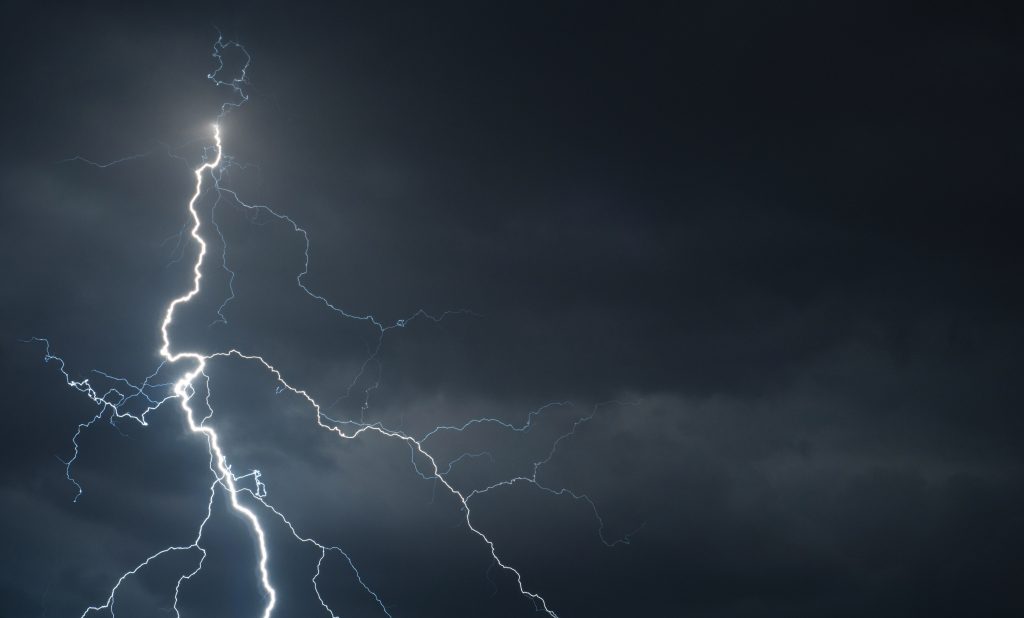
Lightning safety begins when you hear the rumble of the thunder in an impending storm. Growing up, your parents might have told you to count the seconds between the thunder and a strike of lightning to know how far away the storm was.
“One one thousand, two one thousand, three one thousand…”
But, did you know that if your count was under 30 seconds that means the storm is less than six miles away, putting you and others around you in danger? Harrison REMC wants to ensure that you understand the dangers of lightning and how to avoid the risk of death or injury.
Your cooperative hopes that in the occurrence of storms that members will be able find shelter indoors; but if that is not possible, reduce the risk of being struck by lighting by following these safety rules.
We know that water and electricity do not mix, so if you are caught in a storm while at a pond, lake or pool, get out and away from the water as soon as you hear thunder. If you happen to be hiking on a hillside and hear thunder, your first option is to move to lower ground, because lightning bolts will seek out high points on the surface. This also means you do not want to sit under a tree to stay dry. Never seek shelter in a cave or rocky overhang and do not lay flat on the ground. Lastly, place any metal or electrical objects away from you; these include cell phones, GPS units, watches, knives, walking poles, etc.
If you find yourself indoors or have the opportunity to find shelter during a storm, there are still precautions when avoiding the dangers of lightning.
While it might be tempting to sit and watch the storm from your home, stay away from windows and doors. Do not lie on concrete floors or lean against concrete walls, like those found in a basement or garage. Lightning can travel through the metal wires in concrete walls and flooring. Stay off corded phones, computers and other electrical equipment. Again, water and electricity do not mix, so avoid plumbing and water, including bathing or doing laundry.
Following these lightning safety tips can help reduce the risks of danger for you and those around you; but if someone is struck by lightning, they may need immediate medical attention. Lightning victims do not carry an electrical charge and are safe to touch. Call 911 immediately and start CPR if needed.



